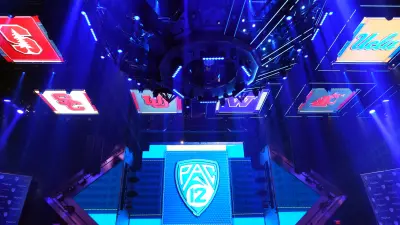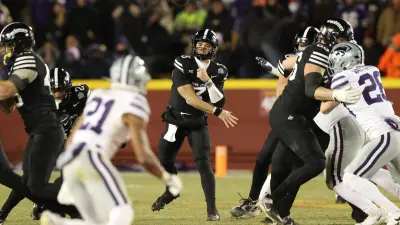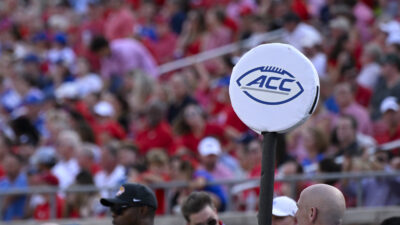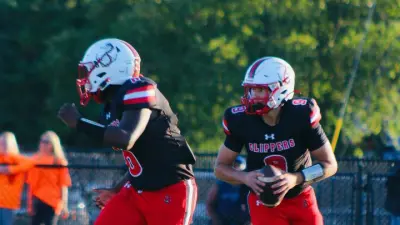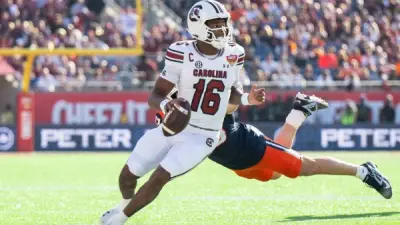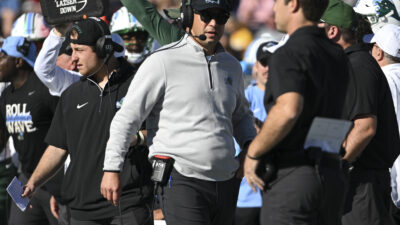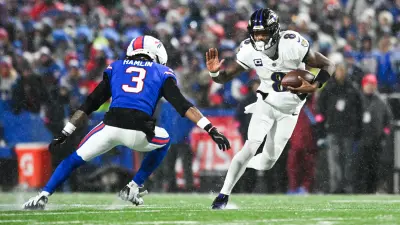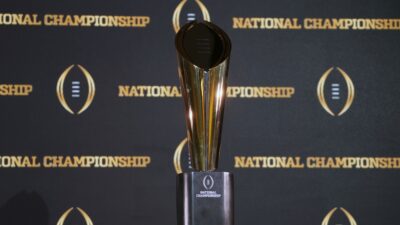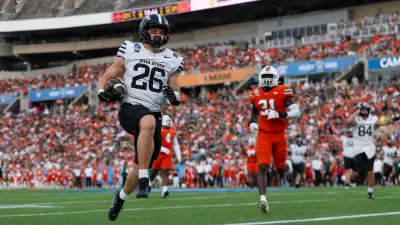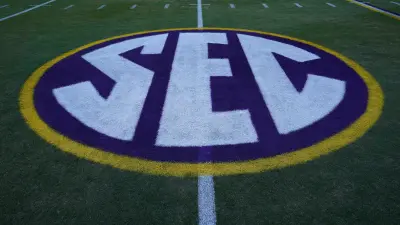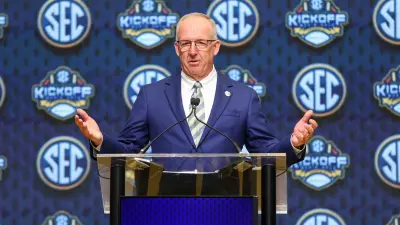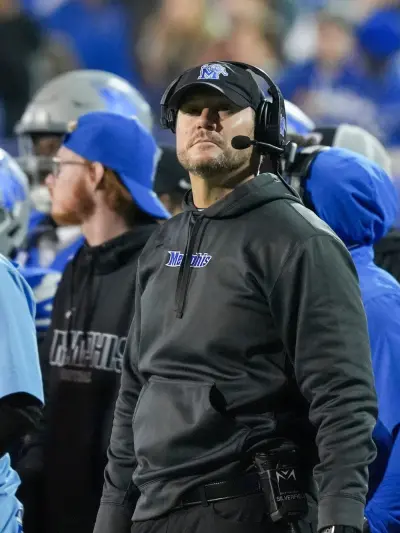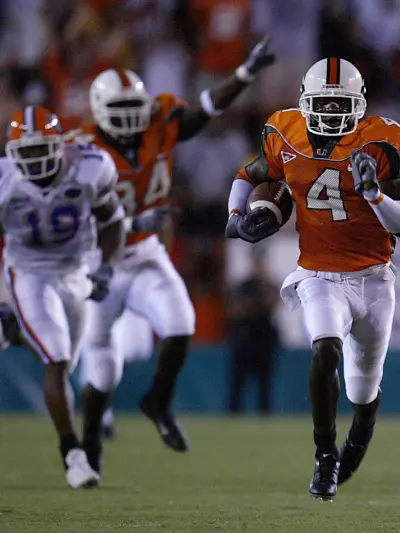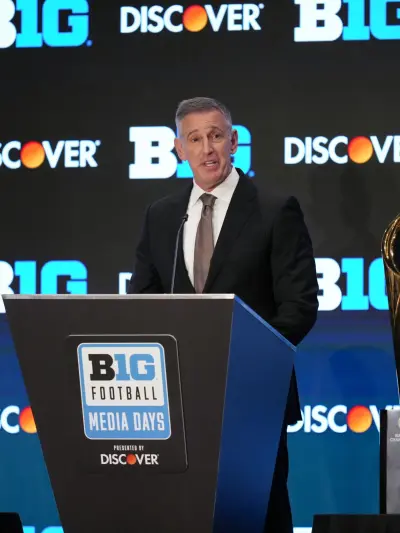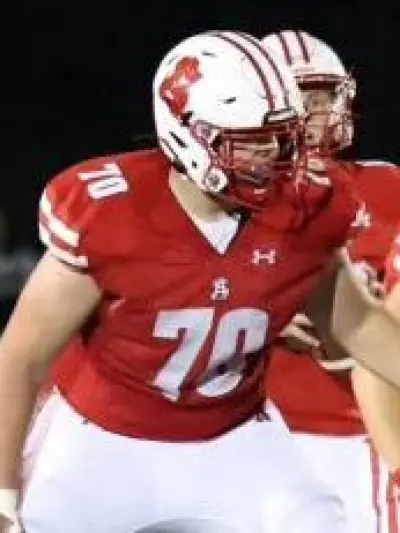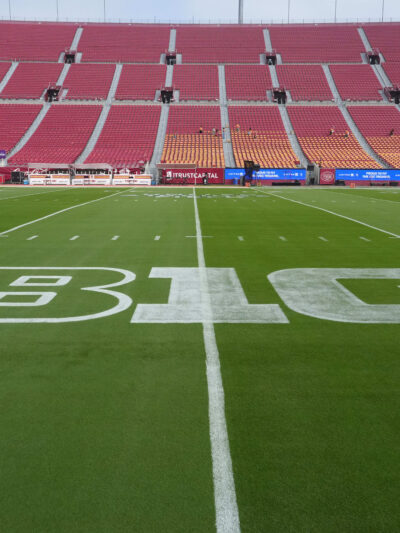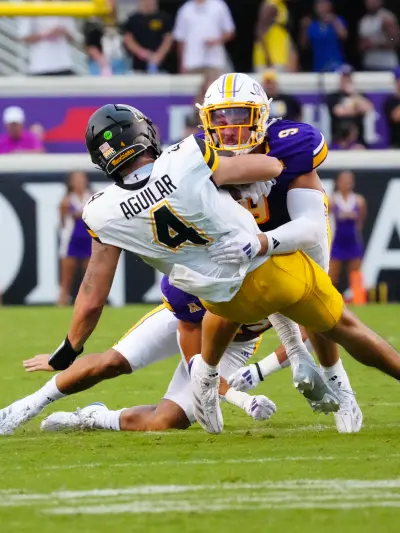by Kyle Golik
Last year, when news broke that Southern California and UCLA were joining the Big Ten, I was extremely conflicted.
As a Big Ten guy, I was ecstatic that these two schools of the highest pedigree were joining the conference, with the Rose Bowl venue becoming a conference site. Just daydreaming of the epic matchups visiting UCLA had me excited.
In recent years, I have often been asked to be a Pac-12 reporter, and here at Mike Farrell Sports, the previous two seasons, I often told the stories of happenings at The Palouse, “The Greatest Setting in College Football,” “The Zoo,” Rice-Eccles Stadium, The Coliseum, “The Farm,” and “The Granddaddy of Them All.”
When the question of the Pac-12 viability came up, I offered many creative ideas through the channel and platform of Mike Farrell Sports. To me, if there was a will, there would be a way.
I was hoping that Pac-12 commissioner George Kliavkoff would be able to keep the Pac-12 together, find a media rights package, and lure in two programs that could help reshape the league. Thinking of programs like San Diego State and SMU eventually rose to the top for me.
As Kliavkoff’s rumored ineptitude began to surface, a clear lack of leadership and inability to inspire the league to stick together led to a state of everyone for themselves. When news dropped that Colorado was bolting for the Big XII, I knew it was a matter of time for the conference.
More Sports News
It will always be unfortunate that the Colorado domino would send everyone to scurry. For a school that accomplished nothing on the field as a Pac-12 member, its greatest “accomplishment” in the league was hiring Deion Sanders, to cause the chain reaction it did that will always leave a sour taste in Pac-12 fans.
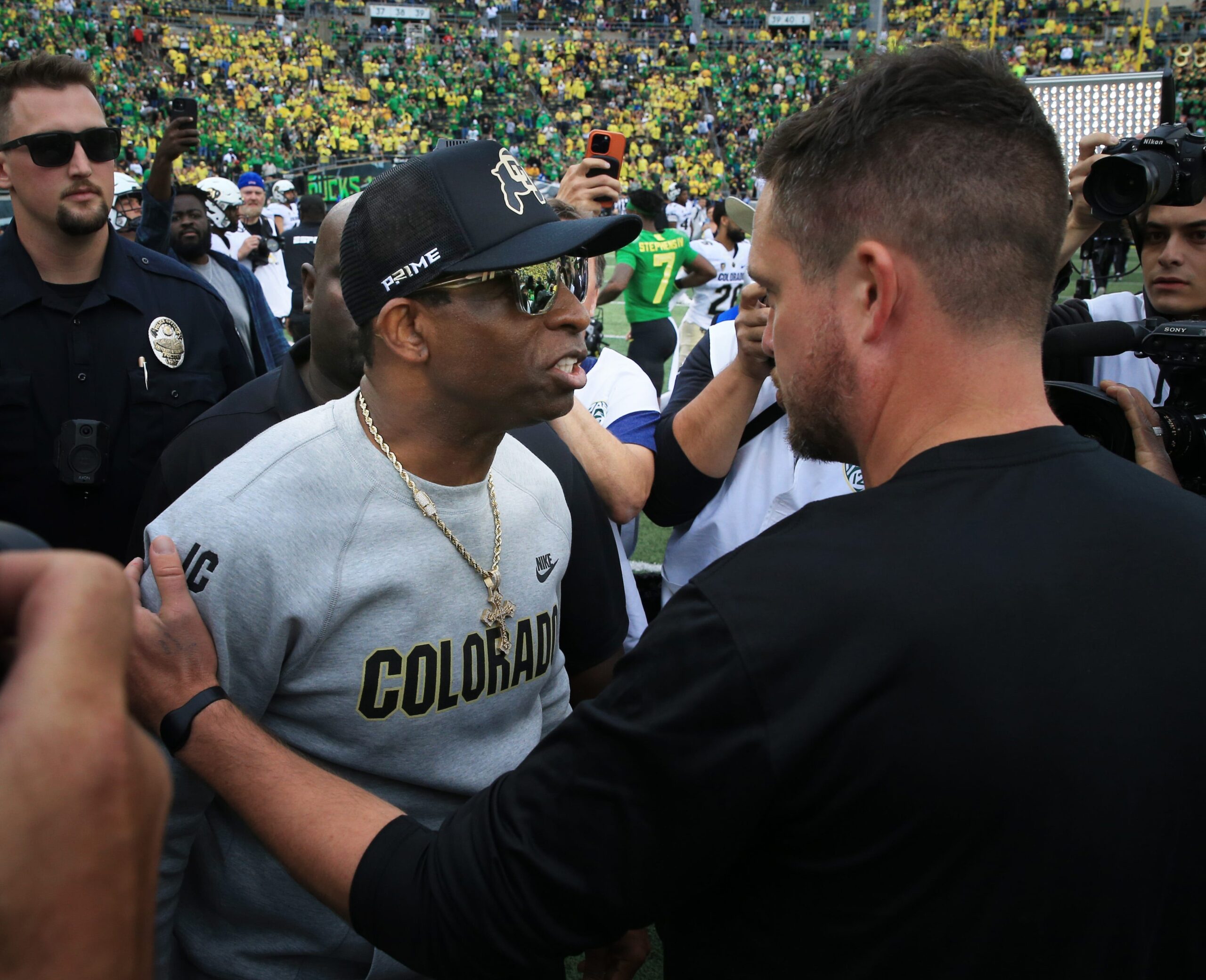
When the news finally broke that Oregon and Washington were heading to the Big Ten, I had never been so conflicted in my life. Again, the Big Ten side of me was elated. The Pac-12 side knew I was just dealt my death certificate.
When the Big XII collected the other three of the four corner schools in Utah, Arizona, and Arizona State, I knew it was over.
The fact Stanford, Cal, Oregon State, and Washington State were left to survive on their own left me aghast. With Oregon State and Washington State not having a relationship like Stanford and Cal enjoy with Notre Dame, one that assisted them in joining the ACC, they were left together to find a way to survive.
If you have been to The Palouse in Pullman, Washington, or to Reser Stadium in Corvallis, Oregon, you know that these are unique stadiums that have excellent atmospheres. The campuses at Washington State and Oregon State are as great as any in the country. The fact that the power conferences, or dare I say the TV networks, don’t find value in these schools is a shame and tragic to this conference.
Think about it for a second: if a network was willing to pay for the content of a conference that consisted of the Pacific Northwest schools, and potentially add in great markets like San Diego and Dallas, I am not writing this article.
When people want to point to a singular blame for the death of the Pac-12, I will always go to media rights money. Grant you, it is a complex web of why the conference died and a story that needs to be told, but the genesis of it all related to media rights money.
To think after Friday, there will be no Pac-12 football (at least the way we know it) is a real tragedy. I understand we are a college football platform, but as each sport concludes its Pac-12 season, the swan songs to a conference that UCLA basketball legend and ESPN basketball color commentator Bill Walton always quips “The Conference of Champions” will be extremely hard to swallow.
https://twitter.com/TylerWojciak/status/1687535222295027712
Spanning more than a century of outstanding athletics achievements in all sports, the Pac-12 has won 553 NCAA Championships (327 men’s, 204 women’s, 22 combined), over 200 more than the next Power 5 conference.
The Pac-12 has been the home of some of the most iconic athletes and coaches in American athletics, whether it is Jackie Joyner-Kersee, Steve Prefontaine, Tiger Woods, John Wooden, Bill Bowerman, or Rod Dedeaux. When it came to football, the Pac-12 was well represented whether it was Bill Walsh, John McKay, Don James, or Pop Warner coaching the sport or the all-time great athletes like Ronnie Lott, Marcus Allen, John Elway, Mel Hein, Troy Aikman, or Mel Renfro.
When you start to go beyond the names I mentioned, the championships the conference won, and the impact Pac-12 athletes had on American sports, there will never be another conference in my lifetime that will ever match it. Others may make more money, and someday a conference will pass them in total championships, but the impact the Pac-12 had, both good and bad, will be forever enduring.
The rivalries that defined the league also shaped college football. Whether it was “The Apple Cup,” “Civil War,” “Cascade Clash,” The Battle for the Territorial Cup, “The Victory Bell,” or “The Axe,” all have been a real treat to cover.
The moments that made us all leap out of our seats, whether it was O.J.’s run against UCLA, Kenny Wheaton’s “Pick,” Jim Plunkett’s connection to Randy Vataha for Stanford to win the Rose Bowl against Woody’s unbeatable Buckeyes.
Epic performances, whether it was Arizona State’s Kallen Ballage’s eight touchdowns or Rose Bowl performances from “Mount Washington” himself Steve Emtman or Christian McCaffrey’s 368 all-purpose yards, are now lost to history.
Wild upsets or moments, like Stanford’s as a 41-point underdog to No. 2 Southern California, Chuck Cecil’s interception in the 1986 Territorial Cup, “The Bush Push,” or simply the most iconic moment in league history, when Cal’s Kevin Moen weaved through the Stanford band for the deciding score to claim “The Axe” forever known as “The Band Is On The Field.”
When I received my application to cover the Pac-12 Championship Game at Allegiant Stadium, as I filled it out, I told myself that I was signing the Pac-12’s guest book for a funeral.
Here is hoping Oregon and Washington put on a successful sequel to their October 14 clash on Friday night and give us one last moment that defined Pac-12 football. A game of this magnitude should be Saturday night, in prime time, with all the pomp and fanfare, but it is for reasons like this I am writing the conference’s epitaph instead of its future, and that deserves our sorrows.
